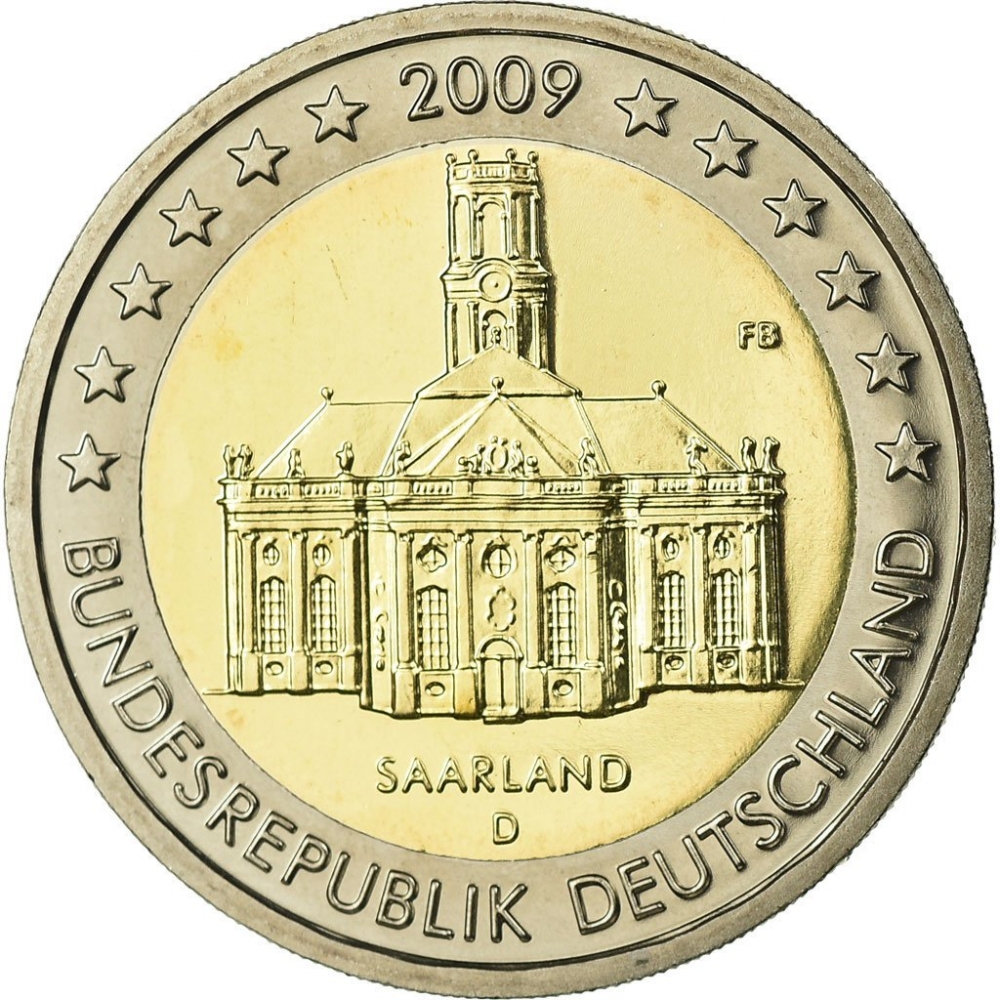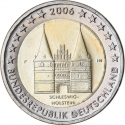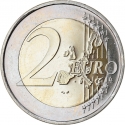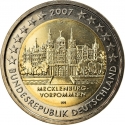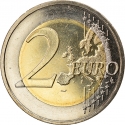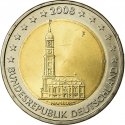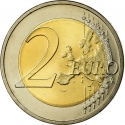You are about to finish your registration. Please check your mailbox (including spam folder). There should be a letter with a confirmation link. Check setting to make sure that your e-mail address is correct.
Send letter againDescription
The Federal Republic of Germany has 16 states (German: Bundesländer). Since 2006, Germany issues every year a Bundesländer coin for a specific state that has that’s year’s presidency of the Bundesrat.
Saarland is located in western Germany and the smallest German state in both area and population apart from the city-states of Berlin, Bremen, and Hamburg. Saarbrücken is the state capital and largest city, while other major cities include Neunkirchen and Saarlouis. Saarland is surrounded by France to the west and south and the German state of Rhineland-Palatinate to the north and east.
Saarland was established in 1920 after World War I as the Territory of the Saar Basin, formed from land of Prussia and Bavaria occupied and governed by France and the United Kingdom under a League of Nations mandate. The heavily industrialized region was economically valuable due to the wealth of its coal deposits and location on the border between France and Germany. Saarland was returned to Nazi Germany in the 1935 Saar status referendum, becoming de jure part of Bavaria and de facto part of Gau Westmark. Following World War II, the French military administration in Allied-occupied Germany organized the territory as the Saar Protectorate from 1947, becoming a protectorate of France, and between 1950 and 1956 was a member of the Council of Europe. Saarland rejected the 1955 Saar Statute referendum, and joined the Federal Republic of Germany as a state on 1 January 1957. Saarland used its own currency, the Saar franc, and postage stamps issued specially for the territory until 1959.
Obverse

|
Depicts Ludwigskirche. Date above, country and state names below. Mintmark (A for Berlin, D for Munich, F for Stuttgart, G for Karlsruhe, J for Hamburg) below and engraver's privy mark on the right. 2009 |
|---|---|
Reverse

|
A geographical map of Western Europe spans the outer ring and inner core on the right side of the coin. The inscription 2 EURO is superimposed over the map of Europe, with the numeral “2” located in an open field representing the eastern Atlantic Ocean. 2 EURO |
| Edge |
UNITY AND JUSTICE AND FREEDOM in German, Germany's national motto and the beginning of Germany's national anthem, followed by the Federal Eagle EINIGKEIT UND RECHT UND FREIHEIT |
2 Euro
German Federal States
Saarland
Subscribe series
KM# 276 Schön# 270 Jaeger# 541
German Federal States
Saarland
Swap now (7 offers)
Characteristics
| Type | Commemorative Issue (Circulating) |
| Material | Bi-Metallic |
| Ring | Cupronickel |
| Center | Nickel Brass |
| Weight | 8.5 g |
| Diameter | 25.75 mm |
| Thickness | 2.2 mm |
| Shape |
|
| Alignment | Medal |
| Mints |
Bavarian Central Mint (D) Berlin State Mint (A) Hamburg Mint (J) Karlsruhe State Mint (G) Stuttgart State Mint (F)
|
